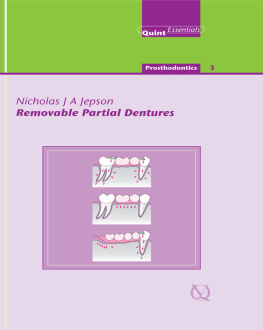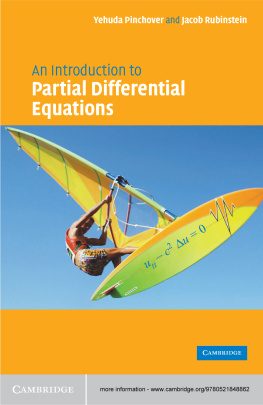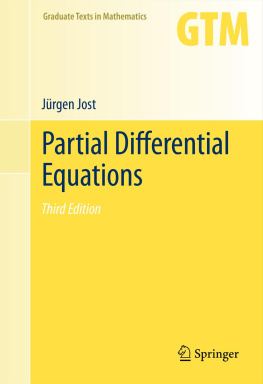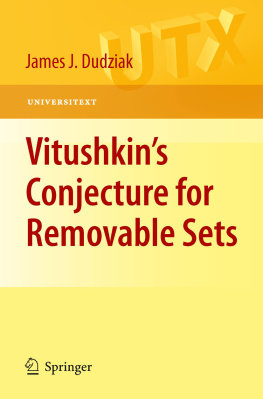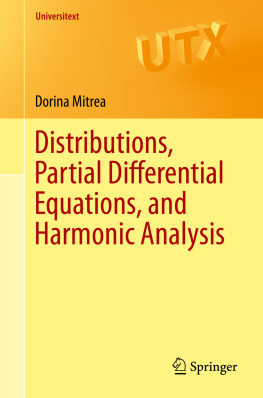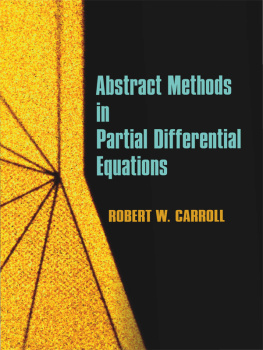Allen P. Finbarr - Removable Partial Dentures
Here you can read online Allen P. Finbarr - Removable Partial Dentures full text of the book (entire story) in english for free. Download pdf and epub, get meaning, cover and reviews about this ebook. City: London [England, year: 2004, publisher: Quintessenz Verlag;Quintessence Publishing Co. Ltd, genre: Children. Description of the work, (preface) as well as reviews are available. Best literature library LitArk.com created for fans of good reading and offers a wide selection of genres:
Romance novel
Science fiction
Adventure
Detective
Science
History
Home and family
Prose
Art
Politics
Computer
Non-fiction
Religion
Business
Children
Humor
Choose a favorite category and find really read worthwhile books. Enjoy immersion in the world of imagination, feel the emotions of the characters or learn something new for yourself, make an fascinating discovery.
- Book:Removable Partial Dentures
- Author:
- Publisher:Quintessenz Verlag;Quintessence Publishing Co. Ltd
- Genre:
- Year:2004
- City:London [England
- Rating:3 / 5
- Favourites:Add to favourites
- Your mark:
- 60
- 1
- 2
- 3
- 4
- 5
Removable Partial Dentures: summary, description and annotation
We offer to read an annotation, description, summary or preface (depends on what the author of the book "Removable Partial Dentures" wrote himself). If you haven't found the necessary information about the book — write in the comments, we will try to find it.
Removable Partial Dentures — read online for free the complete book (whole text) full work
Below is the text of the book, divided by pages. System saving the place of the last page read, allows you to conveniently read the book "Removable Partial Dentures" online for free, without having to search again every time where you left off. Put a bookmark, and you can go to the page where you finished reading at any time.
Font size:
Interval:
Bookmark:
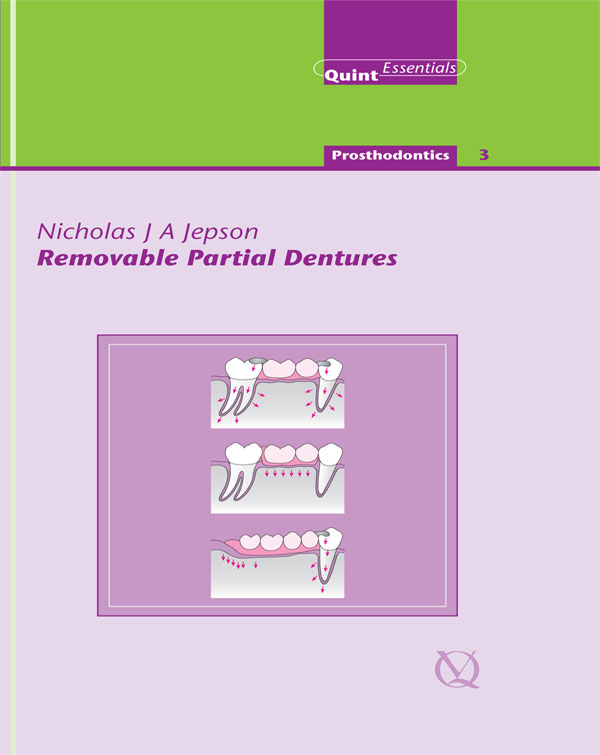
Quintessentials of Dental Practice 18
Prosthodontics 3
Quintessence Publishing Co. Ltd.
British Library Cataloguing in Publication Data
Jepson, N. J. A.
Removable partial dentures. - (Quintessentials of dental practice; 18. Prosthodontics; 3)
1. Partial dentures, removable
I. Title II. Wilson, Nairn H. F. III. Allen, P. Finbarr
617.692
ISBN 1850973180
Copyright 2004 Quintessence Publishing Co. Ltd., London
All rights reserved. This book or any part thereof may not be reproduced, stored in a retrieval system, or transmitted inany form or by any means, electronic, mechanical, photocopying, or otherwise, without the written permission of the publisher.
ISBN 1-85097-318-0
Dedicated to my family and my patients.
Success in partial denture prosthodontics in addition to being a real practice-builder can be very satisfying. The art and science of partial denture prosthodontics may, however, be viewed as complex and challenging. But, as with most things in dentistry, and as is emphasised in this most welcome addition to the Quintessentials of Dental Practice Series, success in the provision of partial dentures is dependent on the adherence to a number of inescapable, underpinning principles: good diagnosis, including an understanding of the patients needs and expectations, knowledge and understanding of the capabilities of existing materials and techniques, careful planning and attention to detail. Equally important is the need to control and treat active oral disease prior to embarking on the replacement of missing teeth a principle which the author of this carefully crafted, succinct text rightfully places great importance on.
Turning to practical matters, this book provides the practitioner with evidence-based guidelines directly applicable to everyday clinical practice. Of particular note is the sound, easy-to-follow and refreshingly pragmatic approach to partial denture design an element of partial denture provision which must be undertaken by the practitioner if the completed dentures are to be acceptable and pleasing to the patient, let alone perform well in clinical service. If you suspect that many of your partial dentures in particular, your lower free-end saddle dentures spend most of their time in a jar, or worse have been lost at the back of some bathroom cabinet or other domestic black hole for items which appeared to be a good idea, but proved to be of little, if any, practical value, then you should read this book. If partial dentures are worth making, then they are worth making well the thrust of this insightful book.
As you would expect of a volume in the Quintessentials of Dental Practice Series, this book is extensively illustrated with high-quality images and produced to an excellent standard. Few, if any, other books on partial dentures provides so much information in a text which may take only an evening or two to read and digest. Your partially dentate patients would be very pleased to hear that this book has formed part of your Continuing Professional Development.
Nairn Wilson
Editor-in-Chief
A partial denture may be defined as a removable prosthesis that replaces a missing tooth or teeth and associated supporting tissues in an arch where some natural teeth remain. It is one of the means of restoring the dental appearance and function for patients with missing teeth and, where such a need exists, there is strong evidence to support their successful use in the long-term.
In terms of materials and techniques very little has changed in recent years in the clinical provision of partial dentures. What has changed significantly is the context of this provision and our understanding of its effects. Important and continuing demographic changes of the partially dentate population, the increasing availability of alternative treatments and, above all, a substantial and growing evidence base for the long-term effectiveness of partial dentures are now significant influences on their use. This book presents a review of these influences and, based on evidence, a systematic and effective approach to removable partial denture provision.
It is hoped that after reading this book the reader will:
Recognise the demographic changes to the partially dentate population, and appreciate the effectiveness of partial dentures and the consequences of their use.
Understand the clinical and patient-related factors that indicate the use of partial dentures and recognise the need to base the provision of partial dentures on perceived aesthetic and functional needs of the patient.
Recognise that not all missing teeth need to be replaced and be aware of the concept of functionally oriented treatment planning for the partially dentate.
Understand the basic principles of partial denture design and the application of these principles to the design of the several partial denture components.
Understand the procedure of cast surveying and how this may be applied to the process of a simple and practical system of design for effective partial dentures.
Recognise that the design of partial dentures is the responsibility of the dental practitioner.
Be aware of the clinical techniques and materials used in the construction of partial dentures.
Understand the indications for and types of transitional partial dentures.
Nicholas J A Jepson
My thanks are due to Mr Dean Barker, Professor Bengt wall, Mr David Smith, and Mr Richard Tones for permission to use some of their photographs as illustrations in the text. I must also acknowledge the role played by my many past and present colleagues, patients and students in forming my views on treatment of the partially dentate in general and the use of partial dentures in particular.
In industrialised countries, as the proportion of adults retaining some of their teeth into old age increases, so will thelikely need for prosthetic intervention. This chapter aims to provide an overview of the need and demand for partial denturesto restore partially dentate adults.
After reading this chapter the practitioner should be aware of the effectiveness and consequences of partial denture use.
Evidence from various national dental health surveys in developed countries clearly indicates that the proportion of peoplewith no teeth at all will continue to decline and that more people will retain some of their own teeth into old age. The resultsof the 1998 national dental health survey in the UK indicate that 87% of all adults had some natural teeth but that this proportionwas strongly influenced by age. The mean number of missing teeth by age group for a number of developed countries is shownin Fig 1-1 using data from the WHO Collaborating Centre, Sweden (2003). Common trends are that significant tooth loss onlybecomes apparent after 45 years of age and that the number of missing teeth increases with age. The percentage of people 45years of age provided with partial dentures differs between countries, a variation that reflects both differing public andprofessional attitudes to partial denture use and healthcare systems, but can reach levels of 2030%. Where provision of partialdentures is a commonly used treatment option for the partially dentate, the principal deciding factor as to whether or nota partial denture is used appears to be the number of remaining natural teeth. Results of the 1998 UK Dental Health Surveyclearly indicate that there is a cut-off point at 2124 teeth and people with 21 or more teeth are unlikely to have removablepartial dentures (Fig 1-2). This supports the important concept of a functional dentition which allows the patient sufficientfunction and comfort without the need for tooth replacements.
Next pageFont size:
Interval:
Bookmark:
Similar books «Removable Partial Dentures»
Look at similar books to Removable Partial Dentures. We have selected literature similar in name and meaning in the hope of providing readers with more options to find new, interesting, not yet read works.
Discussion, reviews of the book Removable Partial Dentures and just readers' own opinions. Leave your comments, write what you think about the work, its meaning or the main characters. Specify what exactly you liked and what you didn't like, and why you think so.

